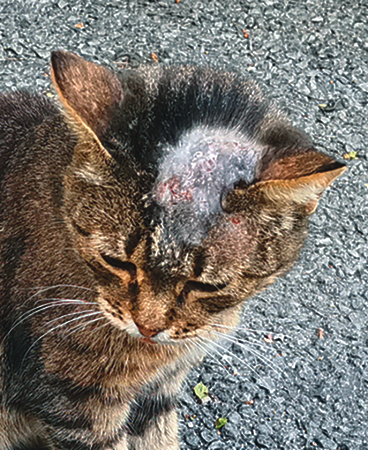Dermatophytosis (“ringworm”) is a common fungal skin infection in cats that can cause hair loss, erythema, and pruritis. The most commonly isolated organism in feline dermatophytosis is Microsporum canis, although infections by other Microsporum and Trichophyton species may occur.
Fungal culture is the gold standard for diagnosis, and therapies include topical and systemic antifungal medications combined with cleaning the environment and limited confinement to prevent transmission to other cats and humans.
Since the late 1950s, “mycological cure” has been defined as two successive negative fungal cultures taken two weeks apart, although the usefulness of the second culture in verifying myocological cure had not been critically evaluated.
A recent retrospective study of 371 shelter cats diagnosed with dermatophytosis and treated a minimum of 21 consecutive days with oral itraconazole and twice-weekly lime sulfur rinses showed that in 335 cases, the first of weekly fungal cultures was negative and follow-up weekly fungal cultures remained negative for the duration of the study. This suggests that two consecutive fungal cultures may not be necessary to verify mycological cure of feline dermatophytosis.n
J Feline Med Surg2020 Jun;22(6):598-601. doi: 10.1177/1098612X19858791




